1. Overview
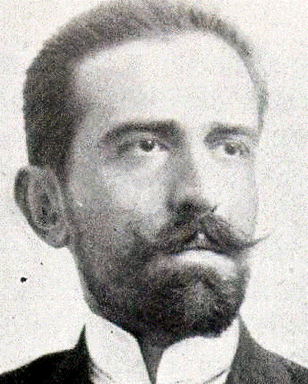
Giuseppe De Sanctis (21 June 1858 - 18 June 1924) was an influential Italian painter, primarily celebrated for his captivating portraits and detailed cityscapes. Born into a supportive family environment in Naples, he received a comprehensive art education before embarking on an international career that saw him exhibit in major European cities like London and Paris. Throughout his life, De Sanctis gained recognition for his contributions to Italian art, earning royal patronage and playing a significant role in various art institutions and exhibitions, notably the Venice Biennale. His work evolved over time, encompassing diverse subjects and leaving a notable mark on late 19th and early 20th-century Italian art.
2. Life
Giuseppe De Sanctis's life was marked by early artistic encouragement, extensive education, and a career that spanned both his native Italy and international art centers.
2.1. Early Life and Education
Giuseppe De Sanctis was born on June 21, 1858, in Naples, then part of the Kingdom of the Two Sicilies, which would later become part of Italy. His family provided a nurturing environment for his artistic aspirations, a contrast to the experiences of many other aspiring artists of his time. His father, Cesare De Sanctis, was a prominent businessman with a deep passion for music, art, and theater. Cesare was notably a close friend of the renowned composer Giuseppe Verdi, who even attended Giuseppe's baptism. This strong family encouragement played a pivotal role in Giuseppe's decision to pursue a career in painting. In 1872, at the age of 14, De Sanctis enrolled at the prestigious Accademia di Belle Arti di NapoliAcademy of Fine Arts of NaplesItalian. There, he received formal training from distinguished masters of the Neapolitan school, including Domenico Morelli, Filippo Palizzi, and Gioacchino Toma, who significantly shaped his early artistic development.
2.2. Early Career and International Experience
Upon graduating from the Accademia di Belle Arti di NapoliItalian, Giuseppe De Sanctis sought to expand his artistic horizons by traveling abroad. He spent time working and studying in both London, England, and Paris, France. During his time in Paris, Morelli provided him with a recommendation that led to a significant collaboration with the renowned French art dealer Goupil & Cie. For Goupil, De Sanctis created a notable series of female portraits, many of which are recognized as his most famous works and feature the same model, highlighting his skill in capturing human likeness and expression. In Paris, he further refined his artistic technique by continuing his studies with the acclaimed French academic painter Jean-Léon Gérôme. De Sanctis was also significantly influenced by his contemporary, Pascal Dagnan-Bouveret, absorbing elements of their styles into his own burgeoning artistic approach.
3. Major Artistic Career
De Sanctis's artistic career was characterized by consistent participation in major exhibitions and a growing influence within Italian art institutions, culminating in a professorship at his alma mater.
3.1. Exhibitions and International Recognition
Giuseppe De Sanctis was a prolific exhibitor, participating regularly in art exhibitions in Naples from 1882 to 1917, maintaining a consistent presence in his home city's art scene. His work also achieved international exposure, being featured in the prestigious Paris Salons in both 1890 and 1899, which were key venues for artists seeking global recognition. A significant milestone in his career occurred in 1886 when his painting, La preghiera della sera a BisanzioEvening Prayer at ByzantiumItalian, was awarded a silver medal at an exhibition in Palermo, Sicily. The painting's success was further cemented when it was purchased by King Umberto I, the then-reigning monarch of Italy, a testament to the high regard in which his art was held at the national level.
3.2. Contributions to Italian Art Institutions
Beyond his exhibition activities, De Sanctis played an active role in the organizational and academic aspects of the Italian art world. In 1890, he was instrumental in the establishment of the Circolo artistico di NapoliArtistic Circle of NaplesItalian, an important association for artists in the city. That same year, he was selected as one of the artists tasked with decorating the interior of the renowned Caffè Gambrinus in Naples, a historic and prominent cultural landmark. Starting from 1895, De Sanctis became closely associated with the Venice Biennale, one of the world's leading contemporary art exhibitions. His involvement deepened in 1903 and 1905, when he served on the Biennale's planning committees, contributing to the direction and curation of this prestigious international event. His academic career also flourished: in 1901, he returned to his alma mater, the Accademia di Belle Arti di NapoliItalian, to succeed his former mentor, Domenico Morelli, as a professor. He was later officially appointed as a professor of etching and engraving, cementing his legacy as both a practicing artist and an educator.
3.3. Later Works and Artistic Direction
In his later years, Giuseppe De Sanctis's artistic focus began to shift, reflecting new interests and patrons. While he continued to paint, his subject matter broadened, increasingly featuring French subjects, possibly influenced by his earlier time in Paris and enduring connections to French art. Alongside these, he undertook a significant series of portraits of the Royal Family, indicating continued patronage from the Italian monarchy. This period demonstrated his versatility and ability to adapt his style to different thematic demands, moving beyond the female portraits that had initially brought him widespread recognition.
4. Artistic Style and Selected Works
Giuseppe De Sanctis was known for his distinct artistic style, characterized by a refined approach to portraiture and evocative cityscapes. His works often displayed a keen sense of observation and a delicate handling of light and color, likely influenced by his training under masters like Morelli and his exposure to French academic and contemporary painting. His early career saw a focus on female figures, often depicted with a gentle realism and a touch of idealism.
His ability to capture both the inner life of his subjects and the atmospheric quality of urban environments distinguished his oeuvre. Among his notable works, several portraits exemplify his skill in depicting human likeness and expression.
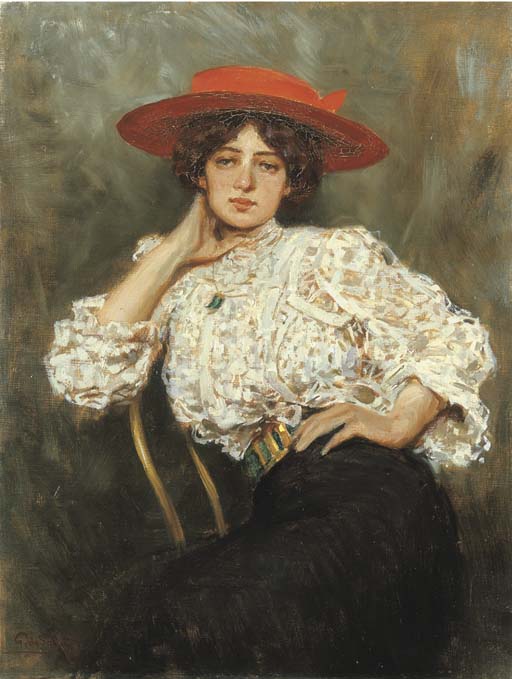
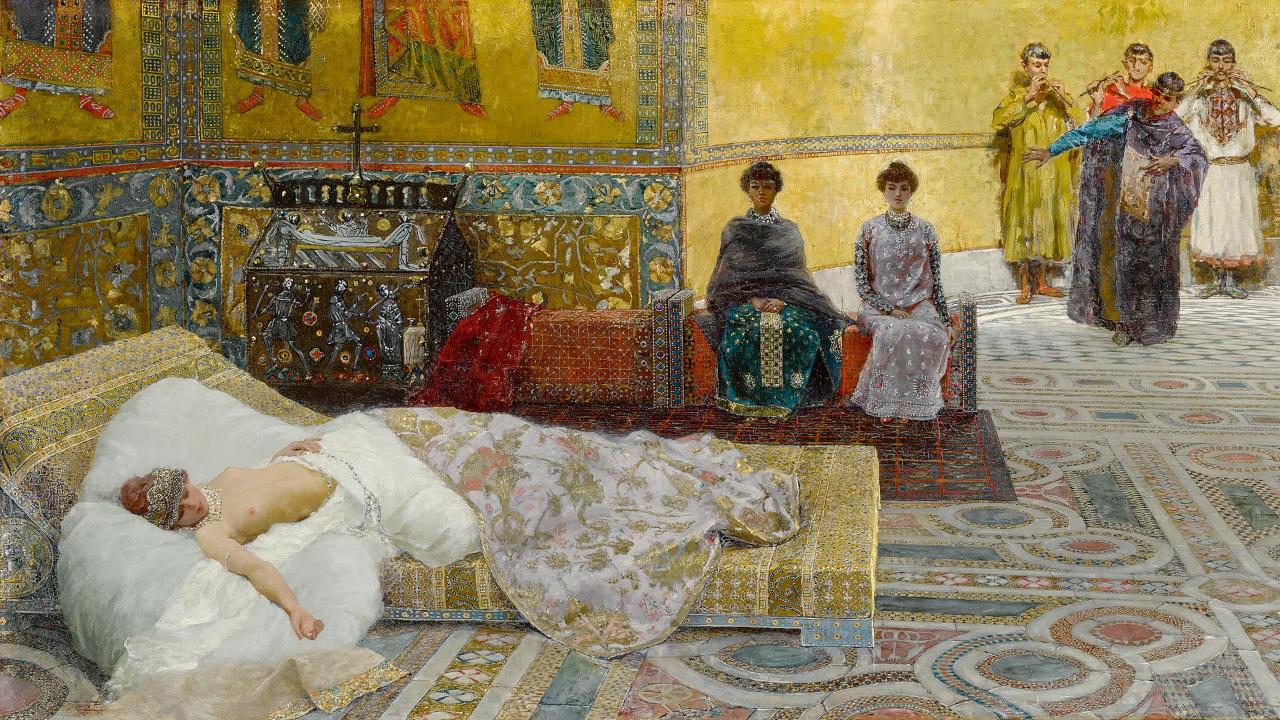
His versatility is evident across a range of themes, from intimate interior scenes to grand cityscapes, and his series of female portraits, often featuring the same model, further highlights his ability to capture nuance.
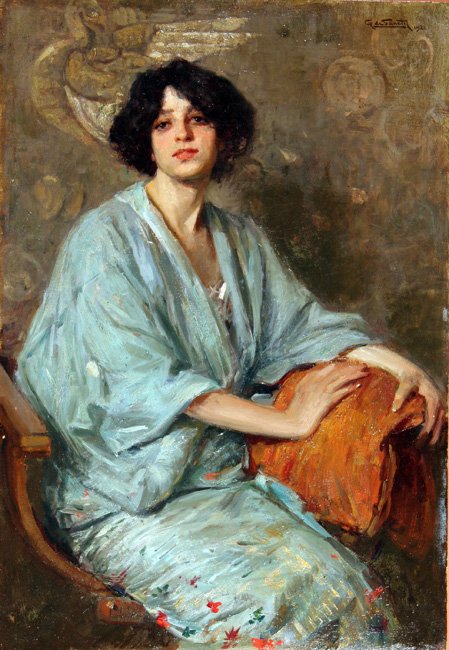
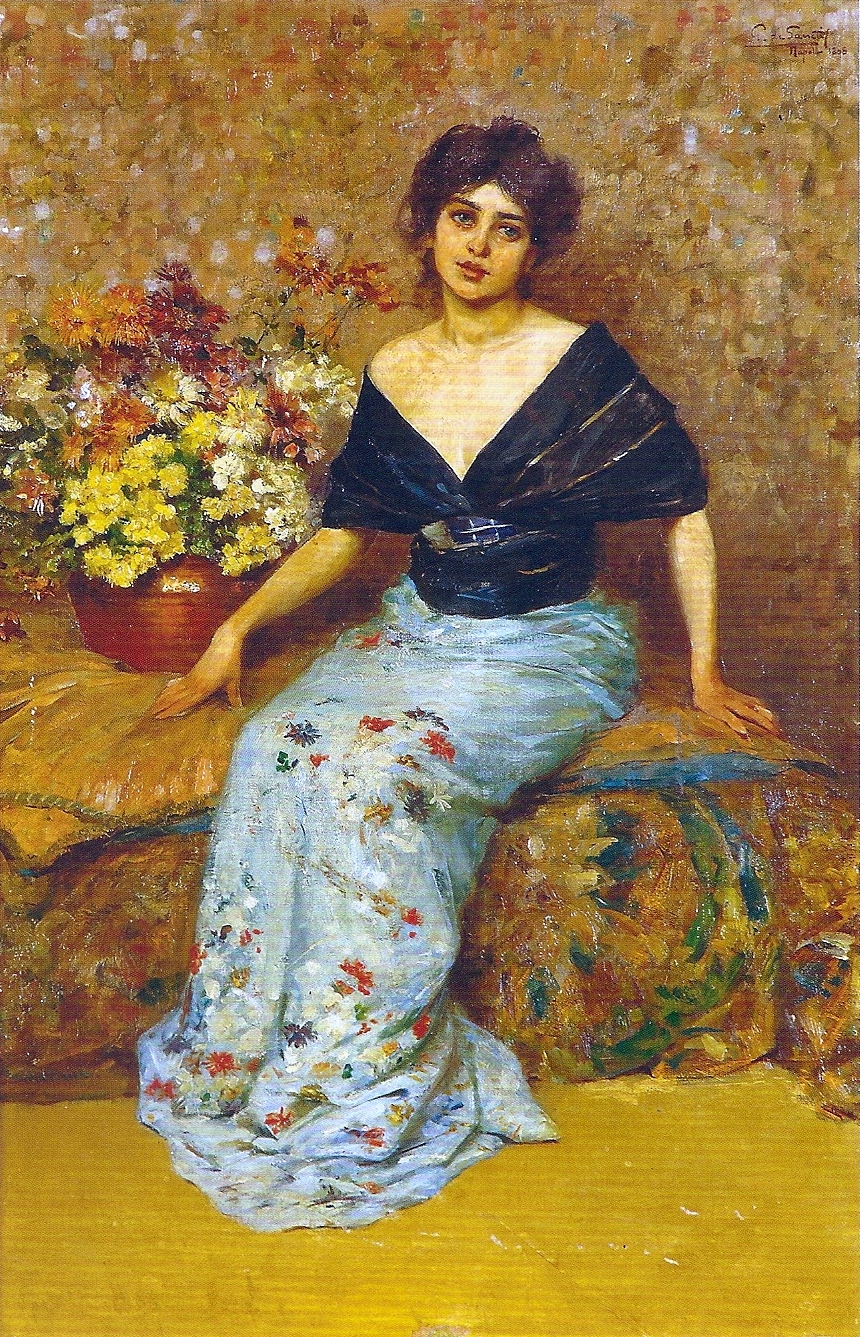
De Sanctis's travels and influences are also reflected in his works depicting foreign settings and diverse subjects, including vibrant urban scenes and tranquil natural landscapes.
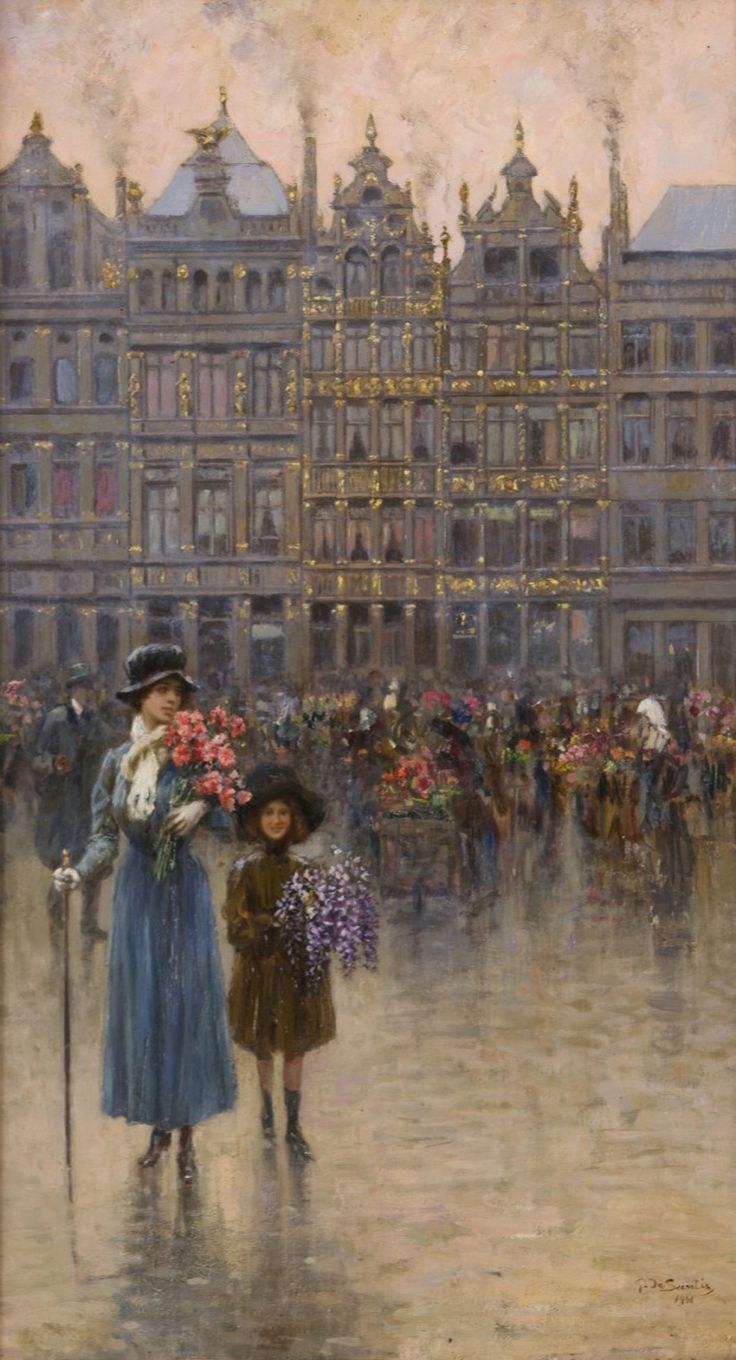
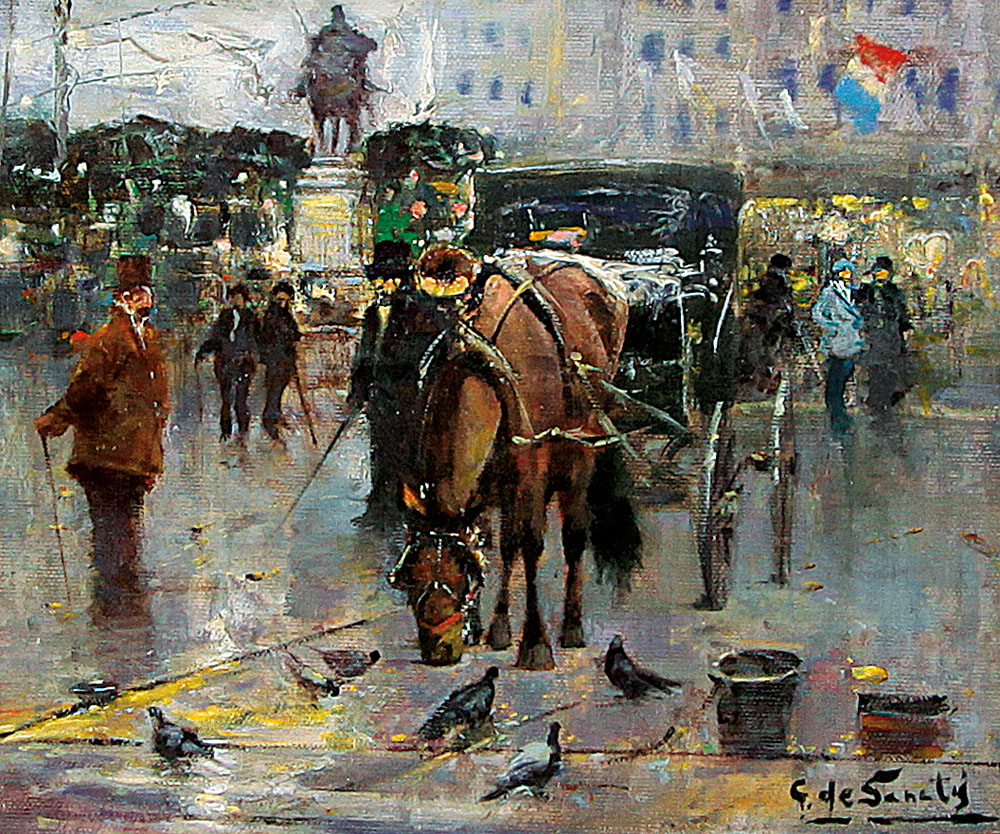
Beyond portraits and urban scenes, his body of work includes allegorical pieces and pure landscapes, demonstrating his comprehensive artistic range.
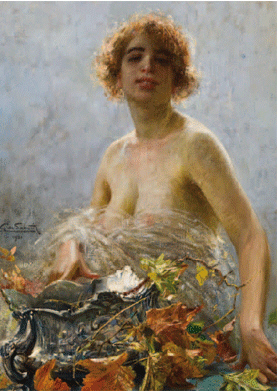
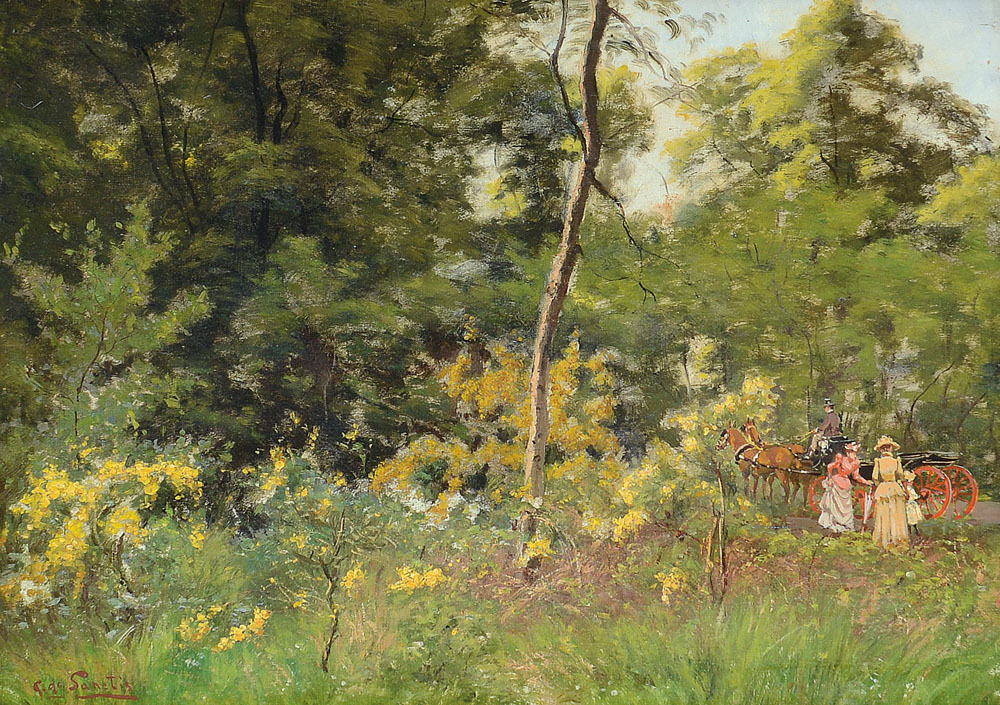
5. Death
Giuseppe De Sanctis passed away in his hometown of Naples, Italy, on June 18, 1924, just three days before his 66th birthday.
6. Legacy and Assessment
Giuseppe De Sanctis left a significant legacy in Italian painting of the late 19th and early 20th centuries. His work, particularly his portraits and the series of female figures from his time in Paris, helped define a period of transition in Italian art, blending academic rigor with a growing sensitivity to naturalism and individual expression. His contributions extended beyond his canvases; through his involvement with the Circolo artistico di NapoliItalian, his role in decorating public spaces like the Caffè Gambrinus, and his critical participation in the planning committees of the Venice Biennale, he actively shaped the institutional landscape of Italian art. As a professor of etching and engraving at the Accademia di Belle Arti di NapoliItalian, he directly influenced a new generation of artists, ensuring that his artistic principles and technical mastery continued to impact Italian painting long after his own lifetime. His works are held in various public and private collections, reflecting his enduring appeal and art historical importance.